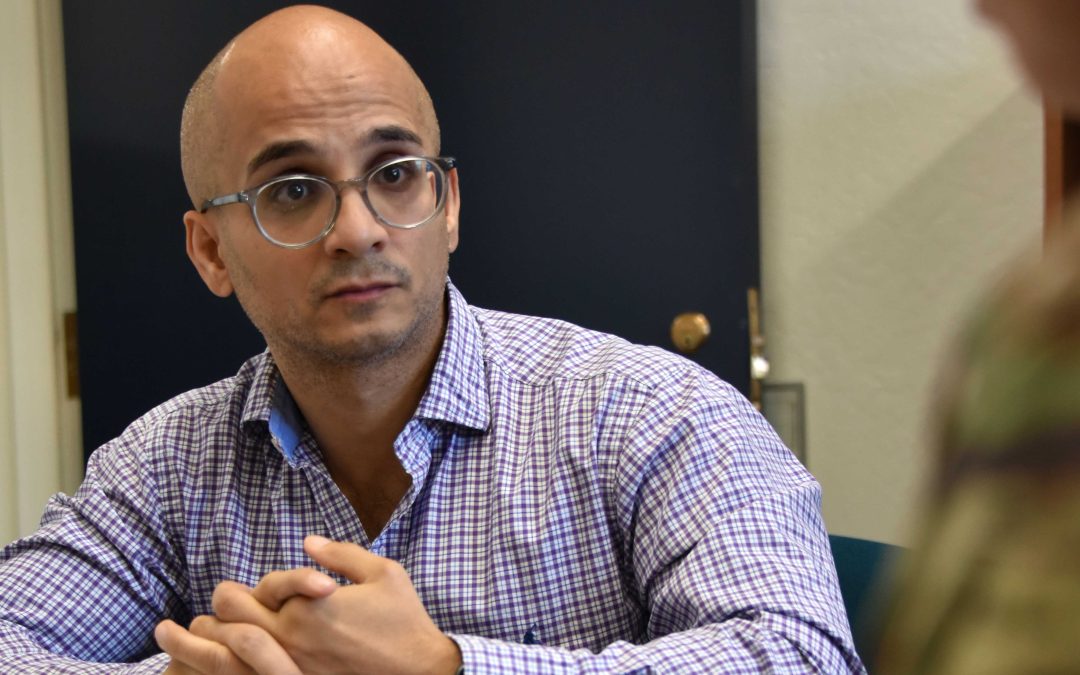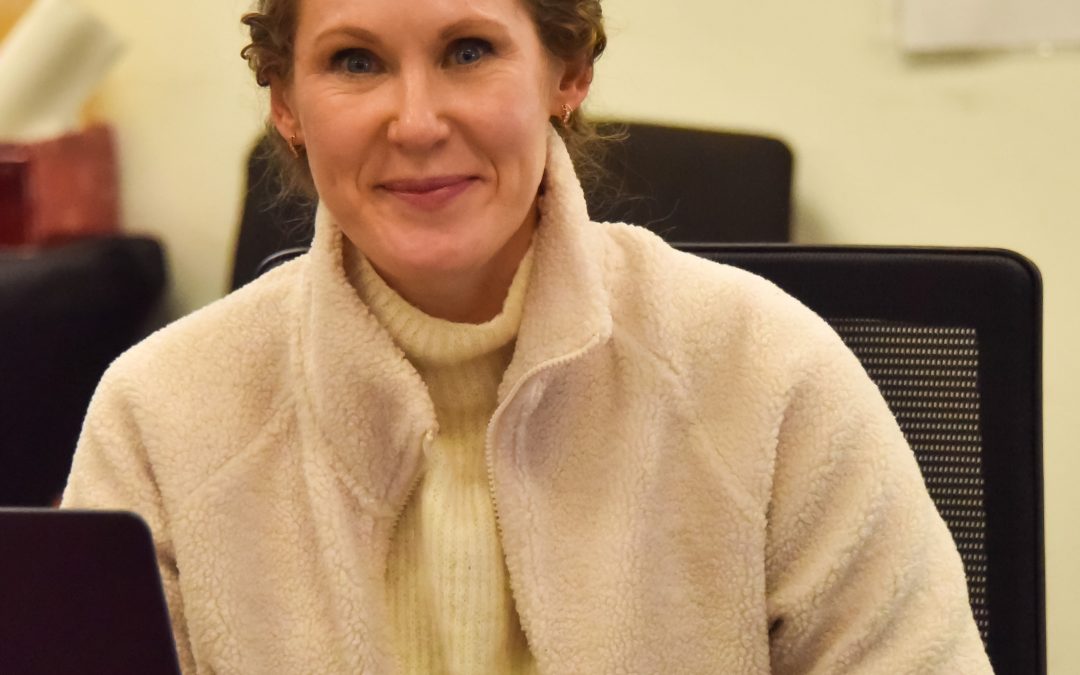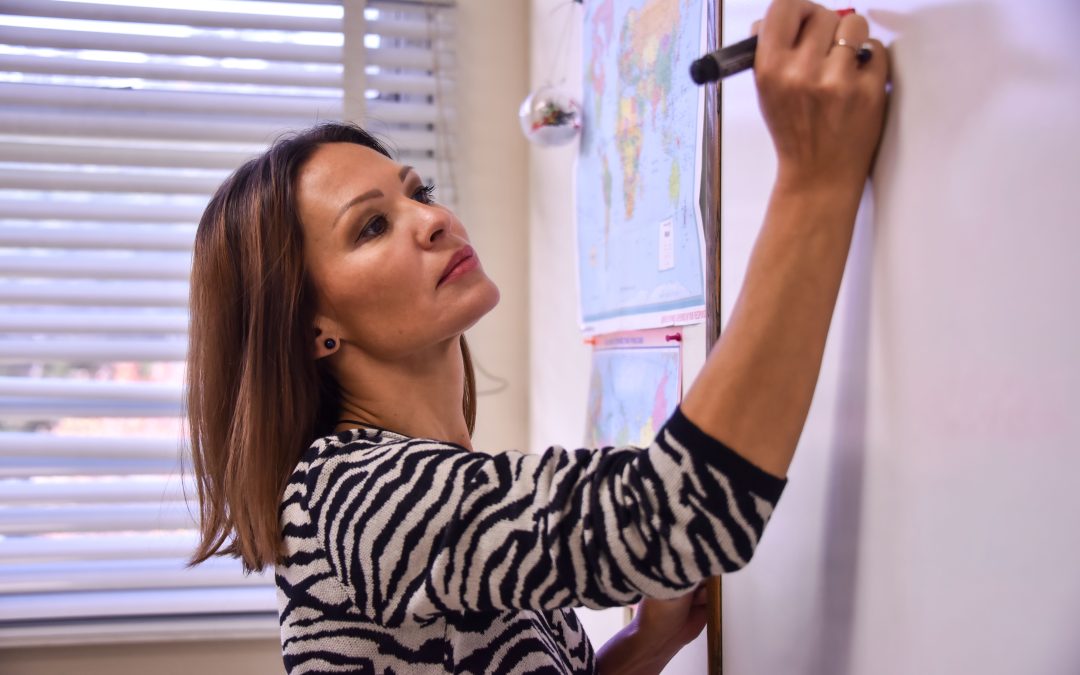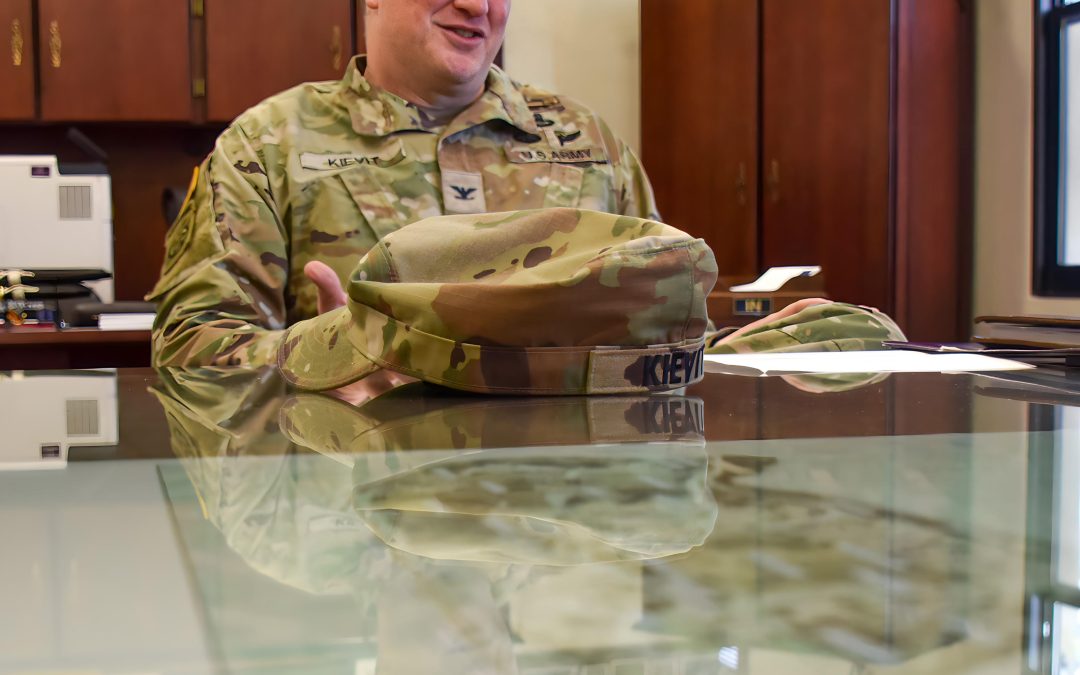By Patrick Bray
DLIFLC Public Affairs
Editor’s note: This article is a feature from the Foreign Area Officer program’s monthly officer professional development series at DLIFLC.
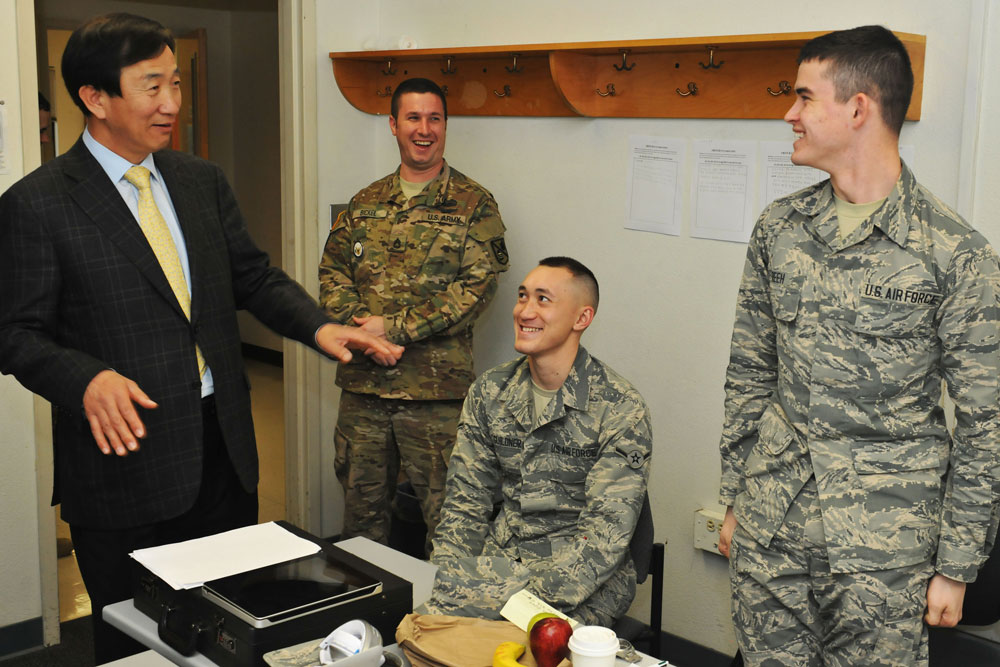
Retired Korean Maj. Gen. Lee Seo-young interacts with students studying Korean at the Defense Language Institute Foreign Language Center Feb. 10. Lee is a professor at the Korea National Defense University and visited DLIFLC to speak about the Republic of Korea – U.S. Alliance. (Photo by Patrick Bray, DLIFLC Public Affairs)
MONTEREY, Calif. – Retired Korean Maj. Gen. Lee Seo-young, now a professor at the Korea National Defense University, spoke about the alliance between the U.S. and Korea to students at the Defense Language Institute Foreign Language Center Feb. 10.
Lee gave his presentation, titled the Republic of Korea – U.S. Alliance: Past, Present and Future, to students at the institute’s Asian School II in Korean and then again later in English to the Foreign Area Officers.
Speaking to the FAOs, “You are the experts between the U.S. and the country in which you serve,” said Lee, who served as a Defense Attaché for Korea in Washington, D.C., where he often worked on issues related to the alliance.
Korea and the U.S. have maintained a bilateral Alliance for more than 60 years. Born out of the Korean War, the alliance grew stronger, both during and after the Cold War. Today, both nations “go together,” as their slogan suggests, to meet the security challenges of Northeast Asia.
Beginning his presentation, Lee spoke about what he learned while researching alliances.
“Most alliances last no more than 10 years,” said Lee. “The Republic of Korea – U.S. Alliance has lasted for 60.”

Retired Korean Maj. Gen. Lee Seo-young with Foreign Area Officers studying at the Defense Language Institute Foreign Language Center Feb. 10. (Photo by Patrick Bray, DLIFLC Public Affairs)
In the first stage of the alliance during the 1950-1953 Korean War under the United Nations Command, Gen. Douglas MacArthur commanded all U.N. forces fighting in Korea. Afterwards, Seoul and Washington signed a mutual defense treaty authorizing further stationing of U.S. troops in Korea. In 1978, Korea and the U.S. established the Combined Forces Command taking over warfighting from the U.N. Command.
As part of mutual defense, Korea and the U.S. work together on East Asia security issues and the U.S. rebalance to the Asia/Pacific region. Korea, also supported the U.S. in Vietnam, the Gulf War, Afghanistan and Iraq. Lee served in Baghdad in 2004.

Conference Row in the Joint Security Area, also known as the “Truce Village,” between North Korea (right side) and South Korea (left side) within the Demilitarized Zone is seen here in 2010. In 1945, the U.N. was established to prevent war, but it approved use of force in two situations: Korea in 1950 and Iraq in 1990. North and South Korea signed an armistice in 1953 ending the conflict, but both countries are still technically at war. Therefore, tensions between the North and South often become elevated and sometimes hostile as a peace treaty was never signed. (U.S. Army photo by Patrick Bray/released)
A major focus for the alliance is still North Korea as the alliance has faced thousands of North Korea armistice violations in six decades.
The continuing U.S. relationship with Korea is vital to both nations, according to Lee. While the alliance is meeting the security challenges it faces today, it is evolving to ensure it can meet any potential challenge in the future.
Lee spoke as part of the FAO program’s monthly officer professional development program, which is a critical part of FAO training at DLIFLC. The monthly program is as an essential addition to the biannual Joint Foreign Area Officer Course Phase I, usually held in January and June.
FAOs, who come from the four branches of the U.S. military, are regionally focused and are considered experts on political-military issues. Once their FAO training is completed, they are expected to serve as defense attachés, security cooperation officers and political-military planners worldwide.
DLIFLC provides resident instruction in 23 languages at the Presidio of Monterey, California, with the capacity to instruct another 65 languages in Washington, D.C., graduating more than 200,000 linguists since 1941.
In addition, multiple language training detachments exists at sites in the U.S., Europe, Hawaii and Korea spanning all the U.S. geographic combatant commands, to support the total force.

